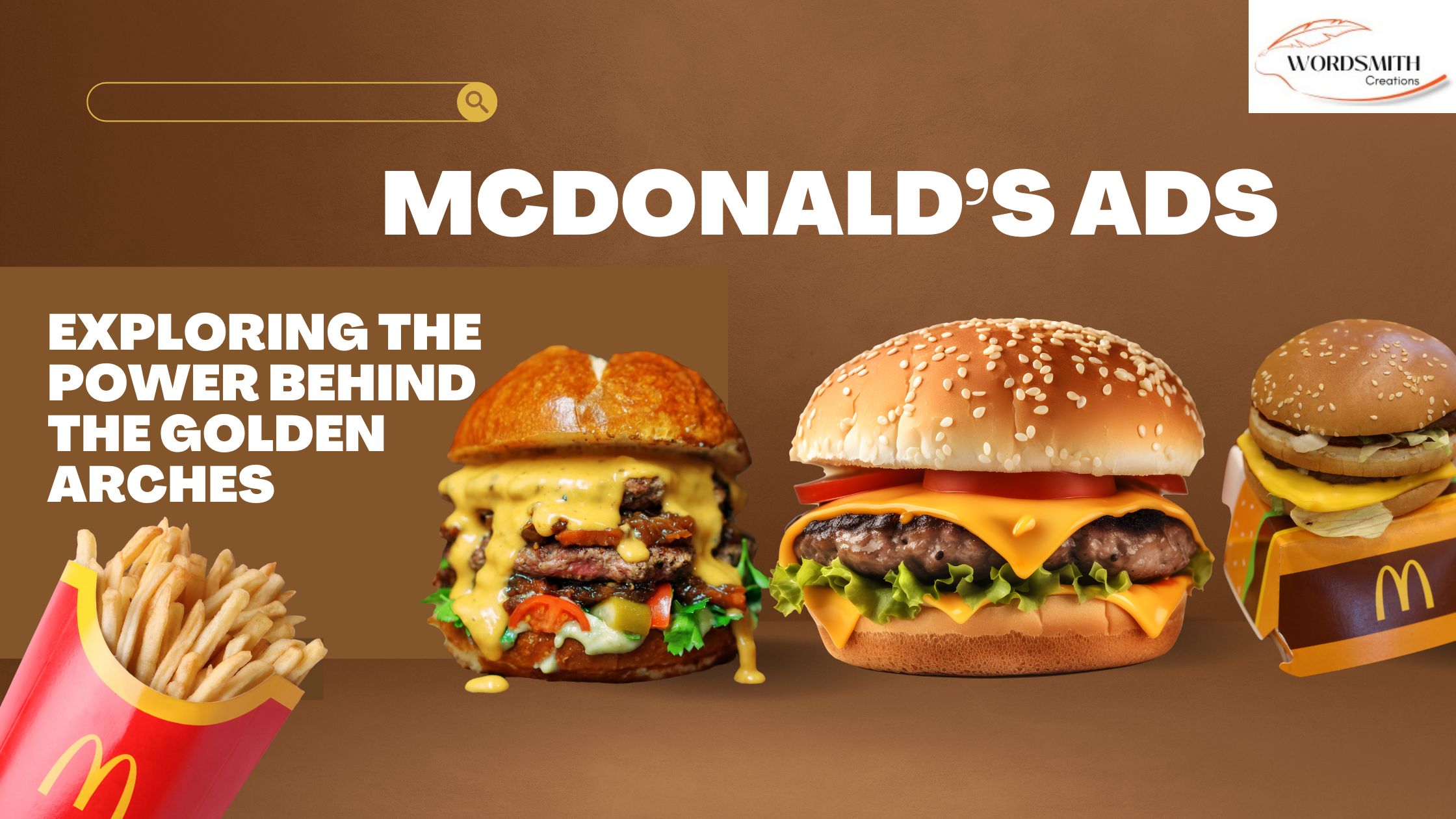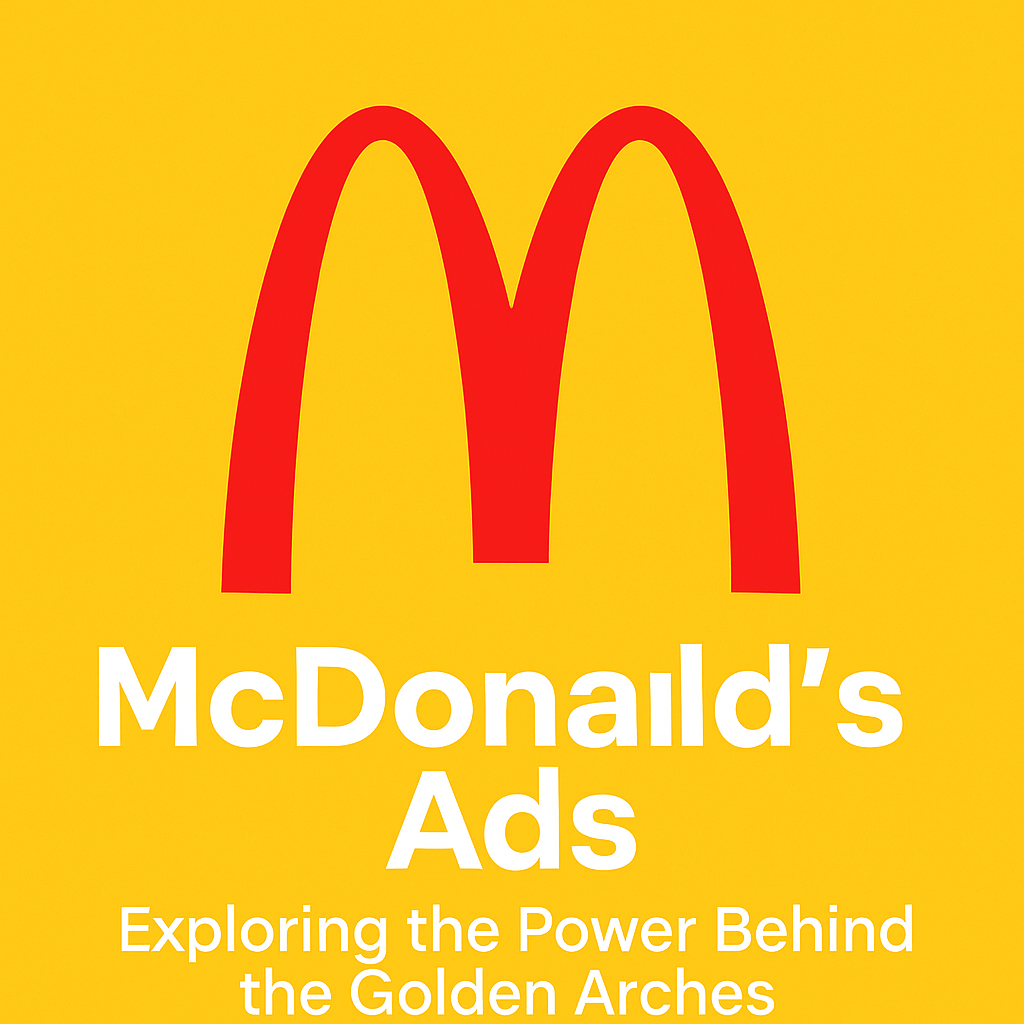
Introduction
From the golden arches to the catchy slogan "I’m Lovin’ It," McDonald’s ads have become an iconic part of global advertising culture. As one of the most recognized brands in the world, McDonald’s leverages a powerful mix of digital marketing, visual storytelling, emotional appeal, and localized strategies to maintain its dominance in the fast-food industry.
In today’s digital age, advertising for McDonald’s has evolved far beyond traditional mediums — embracing social media, influencer partnerships, and targeted online promotions. This blog delves deep into the world of McDonald’s advertisements, exploring how the brand continues to captivate audiences across generations and continents. We’ll examine how McDonald’s poster advertisements, digital marketing campaigns, and celebrity endorsements have shaped the fast-food landscape and redefined brand engagement in a connected world.
The Evolution of McDonald’s Advertising
McDonald’s advertising journey began in the 1960s, with its early campaigns focused on convenience, speed, and affordability. One of the first memorable McDonald’s advertisements featured the tagline "Look for the Golden Arches," helping the brand establish itself as a symbol of reliability and fast service.
Over the decades, McDonald’s introduced unforgettable mascots like Ronald McDonald, Grimace, and the Hamburglar to appeal to younger audiences. The launch of the Happy Meal in 1979, accompanied by toy promotions and colorful packaging, became one of the most successful marketing strategies for children.
As technology evolved, so did McDonald’s advertising. The company transitioned from simple TV commercials to integrated campaigns across radio, print, digital platforms, and now social media. Their visually engaging McDonald’s poster advertisements showcased bold imagery, clever taglines, and culturally relevant messages that resonated with audiences worldwide.
The iconic "I’m Lovin’ It" campaign, launched in 2003 with a jingle sung by Justin Timberlake, marked a global shift in branding. It unified all markets under a single, emotionally resonant slogan that emphasized joy, connection, and everyday moments.
Key Elements of McDonald’s Ad Campaigns
Successful McDonald’s ad campaigns share several consistent features that contribute to their long-standing appeal:
-
Emotional Appeal: Ads often highlight themes of family, friendship, and togetherness. Commercials showing families enjoying Happy Meals or friends bonding over fries create emotional resonance.
-
Consistency: Whether it’s a commercial in Germany or a billboard in Brazil, the brand tone remains friendly, optimistic, and accessible.
-
Memorability: Catchy jingles like "You deserve a break today" or the current "I’m Lovin’ It" slogan make a lasting impact.
-
Visual Excellence: High-quality design and photography in McDonald’s print advertisement campaigns make products look irresistibly appealing.
-
Localized Adaptation: While the core message remains consistent, regional variations ensure cultural relevance. For example, ads in the Middle East often avoid pork and emphasize local spices.
How Does McDonald’s Promote Their Products?
McDonald’s product promotions are multi-layered and data-driven. Here are the key ways the company promotes its products:
-
Product Launches: When introducing a new item like the McSpicy Paneer in India or McRib in the U.S., McDonald’s rolls out multi-platform campaigns. These typically include teaser videos, influencer unboxings, and point-of-sale advertising.
-
Seasonal Promotions: McDonald’s ties its menu to the calendar with holiday-themed offerings like the Shamrock Shake for St. Patrick’s Day or festive packaging during Christmas.
-
Celebrity Collaborations: Collaborations such as the Travis Scott Meal, BTS Meal, and Cardi B & Offset Meal brought pop culture into fast food, driving massive social media engagement.
-
Loyalty and App-based Campaigns: The McDonald’s app offers exclusive deals, gamification elements, and personalized recommendations based on user behavior.
-
Community-Based Events: Local sponsorships, charity events, and school programs further humanize the brand.

The Role of Posters and Print Advertising
While digital media is dominant today, McDonald’s poster advertisements and print ads remain vital tools, particularly for in-store promotions and traditional media:
-
Bold Colors and Typography: The use of red and yellow evokes appetite and energy. Posters often feature minimal text with strong visual hierarchy.
-
Minimalist Design: A single burger image with a witty tagline like "Big Mac is Back" can grab instant attention.
-
Call-to-Action (CTA): Clear CTAs like "Order Now," "Try It Today," or "Limited Time Only" drive immediate response.
-
Strategic Placement: Posters are placed at drive-thrus, bus stops, and malls where they get maximum visibility.
-
Tactile Experience: Unlike digital ads, print creates a tactile, lasting impression which works well for coupons and local flyers.
Global vs. Local Advertising: Tailoring for Every Market
One of the strengths of McDonald’s advertising is its ability to be globally consistent while locally relevant. Here are examples from various countries:
-
India: McDonald’s ads highlight vegetarian options like McAloo Tikki and regional spices, featuring Bollywood actors and colorful visuals.
-
Japan: Unique seasonal items like Ebi Filet-O (shrimp burger) are promoted with kawaii-style aesthetics and anime-style illustrations.
-
France: Emphasis is placed on sourcing quality ingredients locally, with ads showcasing premium coffee and artisan buns.
-
Brazil: McDonald’s ads often focus on affordability and community-centric values, connecting with local cultures.
These campaigns show how McDonald’s advertisements are fine-tuned for each demographic while retaining the essence of the brand.
Most Iconic McDonald's Marketing Campaigns
-
"I’m Lovin’ It": This slogan, introduced in over 100 countries, represents the longest-running global campaign. It highlights happiness in everyday life and personal satisfaction.
-
McDonald’s Monopoly Game: A campaign combining food with a collectible game, increasing purchase frequency through the lure of winning.
-
BTS Meal: This global partnership with the K-pop sensation included special sauces, packaging, and behind-the-scenes content, breaking app download records.
-
Happy Meal Campaigns: With toys from movies like Frozen and Minions, these ads target both children and parents, reinforcing the brand's family-friendly image.
-
Breakfast Campaigns: Ads featuring Egg McMuffin and McGriddles have been crucial in establishing McDonald’s as a go-to breakfast destination.
Apart from this, there are many more examples from across the world where McDonald’s has succeeded. A few of them are:
-
United Kingdom – “Change a little, change a lot” Campaign:
McDonald’s UK emphasized small lifestyle changes, such as balanced meals and sustainable packaging. This campaign aligned the brand with health-conscious and eco-aware consumers.
-
Australia – “Macca’s” Rebranding:
Embracing the local nickname for McDonald’s, the brand officially changed signage to “Macca’s” in certain stores during Australia Day celebrations. It was a brilliant example of cultural localization and brand intimacy.
-
China – “Rice Burger” Promotion:
Understanding local dietary preferences, McDonald’s introduced burgers with rice patties instead of buns, supported by a culturally resonant ad campaign that featured traditional Chinese family settings.
-
South Africa – “We Deliver” Campaign:
A clever series of ads showed people in quirky situations (like stuck in elevators) to highlight the value of McDelivery, capturing humor while promoting convenience.
-
Canada – “Our Food. Your Questions.” Transparency Initiative:
McDonald’s Canada addressed customer concerns directly through videos and articles, building trust by openly showing how food is sourced and prepared.
-
Philippines – Emotional Storytelling:
Many McDonald’s ads in the Philippines revolve around heartfelt stories — including family bonds, first loves, and sacrifices — striking a strong emotional chord with audiences.
The Impact of Digital and Social Media Advertising
McDonald’s uses digital media to create two-way engagement and personalize content:
-
YouTube & Streaming Platforms: Longer ad formats are used to tell stories, such as delivery services or community impact projects.
-
Instagram & TikTok: Trend-based memes, challenges, and aesthetic food photography appeal to younger consumers.
-
Influencer Marketing: Collaborations with food vloggers and TikTok stars generate authentic content that performs well organically.
-
Mobile App Advertising: Push notifications and location-based promotions offer personalized discounts.
-
Email Marketing: Personalized offers and newsletters help retain customers and promote new launches.
Challenges and Criticism of McDonald's Advertising
Despite its massive reach, McDonald’s advertising isn’t without controversy:
-
Targeting Children: Ads aimed at kids have led to debates around health and ethics. Some countries now regulate such promotions.
-
Nutritional Transparency: Critics argue that McDonald’s ads underplay calorie content and promote less healthy items more aggressively.
-
Cultural Missteps: In some markets, tone-deaf campaigns have required quick retractions and apologies.
-
Sustainability: As consumer values shift, ads that don’t reflect eco-conscious practices can damage brand reputation.
McDonald’s has responded with more balanced advertising that includes healthy menu items, eco-friendly packaging, and CSR messaging.
Conclusion
McDonald’s ads are more than just catchy slogans and bright visuals—they're a masterclass in global branding and local adaptation. From emotional storytelling to trend-savvy digital campaigns, the fast-food giant continues to set benchmarks in advertising. As consumer habits evolve, so too will McDonald’s advertisements, ensuring that the Golden Arches remain a symbol of familiarity, innovation, and irresistible cravings.
By embracing emerging trends, responding to public concerns, and staying true to its core brand values, McDonald’s advertising for products, services, and experiences continues to shape consumer behavior on a global scale.